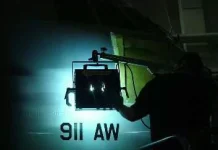By Anthony J. Berejka, radiation processing and polymer technology consultant, co-founder and past president of RadTech North America
In its second issue, UV+EB Technology (2015 Quarter 2, Vol. 1, No. 2, pages 40-46) presented the background and some detail on the New York State Vehicle Composites Program, co-funded by the New York Energy Research and Development Authority (NYSERDA). Throughout 2015, the program has made significant progress in achieving its objectives.
- A poster was presented in April 2015 at the Society of Automotive Engineers (SAE) World Congress in Detroit, where preprints of the noted UV+EB Technology article were handed out.
- Commercial, off-the-shelf carbon fiber pre-pregs (woven carbon fiber into which the uncured matrix has been impregnated) were obtained from two sources based on the customary use of thermosetting epoxy resin materials.
- A mold for the Aston-Martin hood capable of enduring the heat of autoclave curing was made by Nordan Composite Technologies.
- Four Aston-Martin hoods (1.49 by 1.53 meters) were cured using a 2.4-meter diameter, 6.1-meter long autoclave at the Composite Prototyping Center in Plainview, New York, (www.compositepro.org), and the power demand to cure a hood during its three-hour cure cycle was measured. Figure 1 shows the vacuum-bagged hood being examined after having been removed from the autoclave. Figure 2 is a picture of the first hood produced using thermal curing.
- A radiation-curable matrix material was developed by Rapid Cure Technologies of Syracuse, New York (www.rapidcuretechnologies.com).
- Renegade Materials Corporation of Miamisburg, Ohio (www.renegadematerials.com), was able to convert Rapid Cure Technologies’ 100 percent solids radiation-curable matrix into a carbon fiber pre-preg.
- Two hoods made with the Renegade pre-preg using the Rapid Cure Technologies matrix material were X-ray cured at IBA Industrial, Inc. in Edgewood, New York (www.iba-worldwide.com).
- Evaluations of the cured pre-pregs were made using Dynamic Mechanical Analysis (DMA) by COMTEC, the Composite Materials Technology Center at Winona State University, Winona, Minnesota, (www.winona.edu/engineering/comtec.asp) to determine glass transition temperatures (Tg) and Young’s modulus.
- At the Society of Plastics Engineers (SPE) Automotive Composites Conference and Exhibition in September 2015 in Detroit, Michigan, discussions were held with some of the vendors to the automotive industry and with personnel from a major car manufacturer.


During the course of this work, several ways of improving the overall process were noted, such as automating the cutting and placing of the pre-pregs in the mold and adjusting the rheology of the radiation-curable matrix either itself or by process techniques to enhance flow within the mold.
The New York State Vehicle Composites Program will have a booth and give a presentation at the SAE 2016 World Congress, April 12-15, 2016, in Detroit, Michigan. Details of power demands and time-to-cure will be discussed: “Power Demands for Curing Carbon Fiber Composites for Automotive Components.” X-ray curing requires somewhat less power draw based on using a 7.0 MeV, 700 kW electron accelerator to generate X-rays (as is now being used for medical device sterilization in Switzerland) vs. autoclave curing. However, there can be a significant reduction in the time-to-cure, with as low as 1.3 minutes per hood being estimated with use of a properly designed X-ray curing facility. Both an autoclave-cured and an X-ray-cured hood will be exhibited, as well as a hood coated with a Rapid Cure Technologies silver metallic and clear coatings cured using ultraviolet radiation (UV) with support from Allied Photochemical (www.alliedphotochemical.com).
A presentation on this program will be offered at RadTech 2016, May 16-18, in Chicago, Illinois. Plans also are being made to give a presentation at the Society for the Advancement of Material and Process Engineering (SAMPE) Conference, May 23-26, 2016, Long Beach, California.
For additional information, contact Tony Berejka at 631.549.8517 or email berejka@msn.com.





